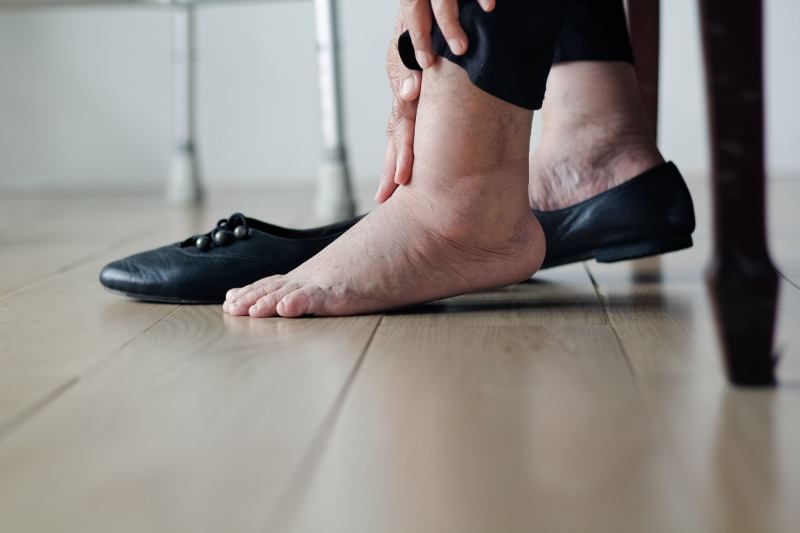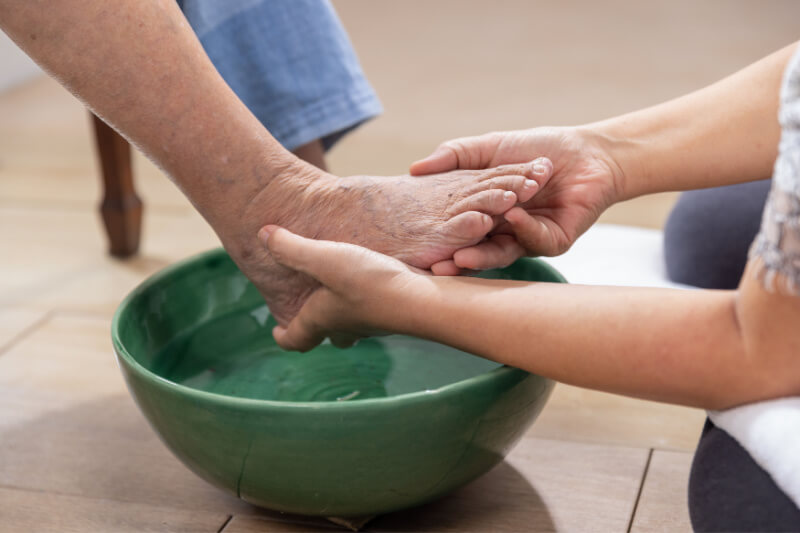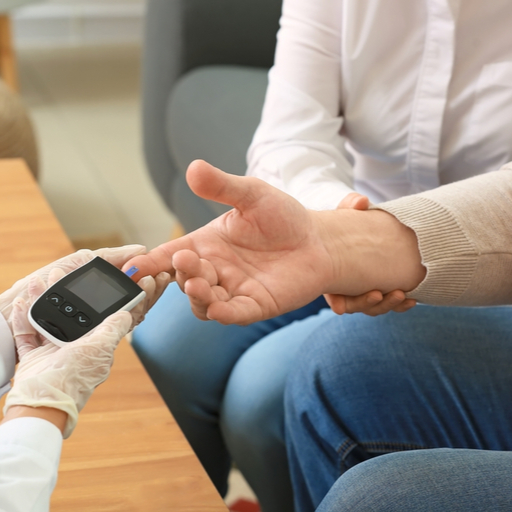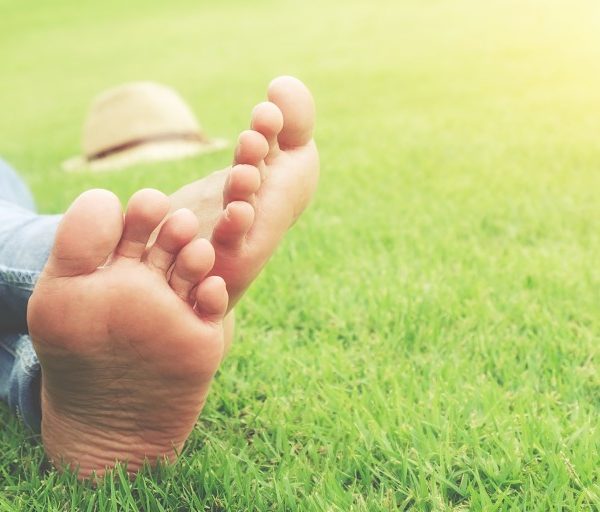Diabetes is a chronic lifestyle condition in which blood glucose or blood sugar levels are high. The body breaks down most of the food you eat into sugar (glucose) and releases it into the bloodstream. When the blood sugar level rises, the pancreas releases insulin, a hormone that helps glucose get into cells, which is later utilized as energy. In type 1 diabetes, an autoimmune reaction stops the body from making insulin, whereas, in type 2 diabetes, the body is unable to utilize the insulin produced. Gestational diabetes develops in pregnant women who have never had diabetes.
What you need to know:
- Understanding diabetic foot problems
- Why diabetes foot care is crucial?
- Treating diabetic foot problems
- Food for diabetic foot care
- Diabetes foot care exercises
Understanding diabetic foot problems
Foot care is an essential part of diabetes, as people with diabetes are at a higher risk of foot problems due to poor circulation and nerve damage, called diabetic neuropathy. Some symptoms of diabetic neuropathy include:
- Numbness in hands, feet, and legs
- Tingling sensation and shooting pains
- Urinary problems
- Nausea, vomiting, constipation, or diarrhea
- Dizziness when you change positions
People with diabetes are also more likely to develop peripheral artery disease (PAD), which causes arteries to narrow or block. This condition can make it difficult for a diabetes-caused foot ulcer to heal.
How to recognize the symptoms of diabetic foot problems?

If you cannot feel pain in your feet, you may not be aware of any cuts or blisters on your foot. These open wounds can get infected and may not heal well due to the poor flow of blood to the feet. It can also result in gangrene, wherein the muscles, tissues, or skin start dying. When a foot ulcer or gangrene does not get better with treatment, it may lead to foot amputation to prevent the infection from spreading to the rest of the body. Changes in the skin color of the foot, ingrown toenails, and swelling in the foot or ankles can also be associated with the symptoms of diabetic foot problems.
Those individuals are more prone or vulnerable to diabetes-related foot conditions who:
- Have had diabetes for a long time
- Experience frequent episodes of hyperglycemia (high blood sugar levels)
- Have nerve damage or poor blood flow in the feet
- Are you obese or overweight
- Have high blood pressure or high cholesterol
Why diabetes foot care is crucial?
Proper foot care is essential for people with diabetes. Diabetes can cause poor blood circulation, slowing wound healing in the feet. Diabetic neuropathy, caused by high blood sugar, may numb the feet, making it difficult to detect injuries. This numbness increases the risk of unnoticed injuries becoming infected. Additionally, weakened immune systems increase the risk of infections, potentially leading to hospitalization or amputation. Diabetes may also alter foot shapes, causing conditions like bunions, which can pressure the foot and create ulcers. Consistent foot monitoring and care are crucial to avoid serious complications like gangrene and to reduce the need for surgical interventions.
Treating diabetic foot problems
Take a look at a few steps for diabetes foot care:
Daily foot care routine for people with diabetes

- Check your feet daily for cuts, blisters, sores, redness, swelling, or changes in skin and toenails. Ensure you check the bottom of your feet as well.
- Wash your feet daily with warm water and mild soap, but avoid soaking your feet for long hours as it may cause dryness in the skin. After you dry your feet, use talcum powder or cornstarch between your toes to soak up the moisture that can cause an infection.
- Apply a moisturizer on the top and bottom of your feet, but not between the toes.
- Ask your doctor how to remove corns and calluses safely.
- Protect your feet from extreme temperatures, such as hot sand or pavement. Use sunscreen on exposed skin.
- Avoid walking barefoot, even indoors. Wear well-fitting shoes, sandals, or socks when you step out. Check for stones or pebbles which can rub your skin raw.
- Trim your nails straight across with a clipper to prevent ingrown toenails.
- Keep the blood flowing into your feet. Wiggle your toes and move your feet in a circular motion throughout the day. Put your feet up when you are sitting. Avoid wearing tight socks that can block blood circulation. Stay active and get involved in activities that are easy on your feet, like walking.
- Regularly monitor your blood sugar levels and keep them within the target range to prevent nerve damage, which can increase the risk of foot problems.
- Consult a doctor who specializes in feet and act according to their suggestions. Clean your wound. Apply special bandages and ointments to help the wound heal.
Footwear selection and care for people with diabetes
Invest in a pair of diabetic-friendly shoes to keep your feet healthy, which will reduce friction on your foot and reduce the risk of new wounds. The following are a few critical features you need to look at:
- Wear shoes with a closed toe and firm back to prevent any damage to your feet from the surroundings and reduce any unnecessary friction. Sandals, slip-ons, or slippers leave the feet exposed, which can lead to stubbing or scuffing of toes. Sandals with rubber straps can rub against your feet and may lead to wounds or infections.
- Look for lightweight and flexible materials, like leather or canvas shoes, which are durable, flexible, and breathable. Avoid rubber shoes as they trap moisture, which can lead to infections.
- Shoelaces allow you to adjust the tightness of the shoes, which can help prevent your foot or ankle from swelling up—a common symptom of diabetes. An alternative is shoes with Velcro straps.
- Flats are a safe choice, as your body weight is evenly distributed across your entire foot. Avoid wearing high heels, as they can shift your body weight to the front part of the foot, which creates excessive pressure and friction between the toes.
Food for diabetic foot care
Nutrition is often the first priority while treating patients with diabetic foot ulcers. Take a look at the following food recommendations for individuals who have diabetes:
- Consume foods with natural anti-fungal properties, like garlic, apple cider vinegar, and gluten-free whole grains.
- Omega-3 fatty acids can reduce inflammation and the risk of inflamed tissues at the heel of the foot. Some rich sources of omega-3 fatty acids are salmon, eggs, fortified orange juice, whole grain cereal, peanut butter, and yogurt.
- Keep your immune system strong to ward off microbes that can enter your feet through blisters with foods like garlic, oats, barley, chicken soup, beef, and sweet potatoes.
- Include yogurt, cheese, and broccoli in your meals, as they are rich sources of calcium and vitamin D. These two nutrients can help strengthen bones and prevent the risk of osteoporosis.
Avoid eating candies, energy bars, or starchy vegetables like peas, corn, and potatoes, which can raise blood sugar levels.
Diabetic foot care exercises
Regular exercises can help you control your diabetes and regulate blood sugar levels. If you have nerve damage in your feet, avoid repetitive, weight-bearing exercises like jogging, prolonged walking, or step aerobics. Instead, choose exercises that do not put a lot of stress on your feet, such as:
- Rowing
- Bicycling
- Swimming
- Upper body exercises
- Seated strength-training exercises, such as bicep curls and shoulder presses
- Balance and stability workouts with one-legged exercises and core exercises, like planks, bird dogs, and dead-bugs
- Non-weight-exercises
- Yoga
You can rely on our Online Blood Sugar Calculator to check your blood glucose readings. Control your blood sugar levels to prevent nerve problems from getting worse.
Stay tuned to the Activ Living Community. Keep up to date with the latest health tips and trends through expert videos, podcasts, articles, and much more on nutrition, fitness, mindfulness, and lifestyle conditions like Asthma, Blood Pressure, Cholesterol, and Diabetes. Activ Living ke saath sahi sehat ki shuruaat ABHIkaro.
You may also be interested in the following blogs:
- Importance Of Gut Health: 4 Tips And Practises For Perfect Overall Health
- The Ultimate Guide To Food Safety: 4 Expert Tips You Should Follow
Popular Searches
How to lower blood pressure | Fruits good for liver | Unhealthy foods | Ragi Benefits | Basal Metabolic Rate | Acupressure points for High Blood Pressure | Ayurvedic medicine for blood pressure | How to control cholesterol at home | Homeopathy for Asthma | Biological Age | Home remedies for TB | Natural beta blockers | Negative effects of internet | Types of walking | Blood pressure calculator | Blood sugar calculator | BMI Calculator





 1800-270-7000
1800-270-7000








